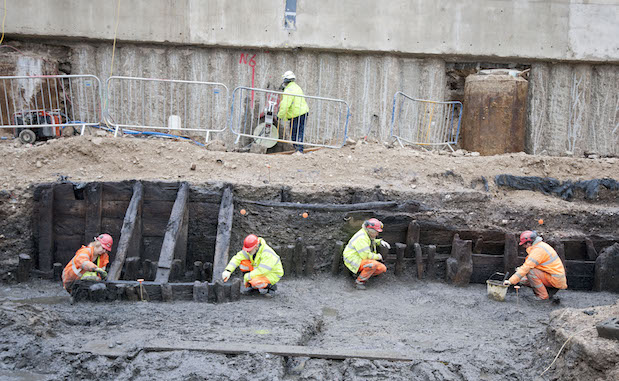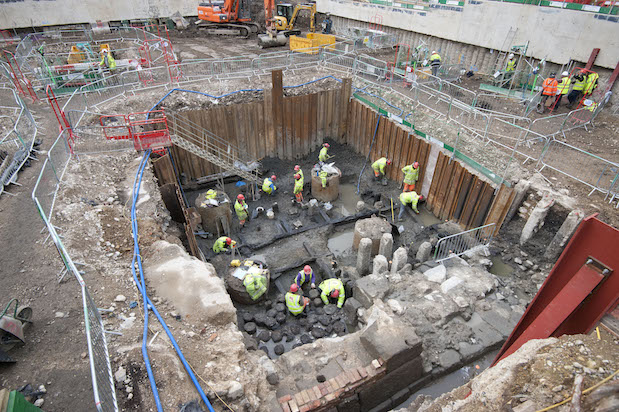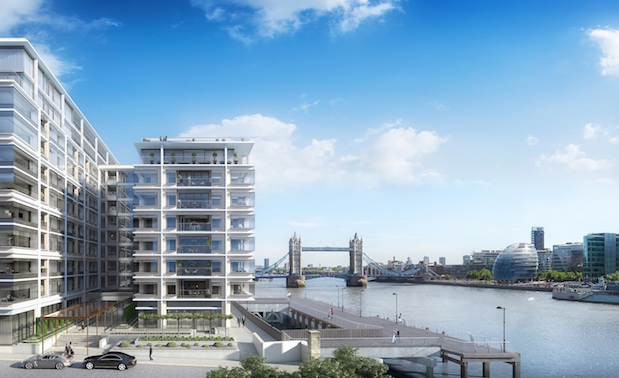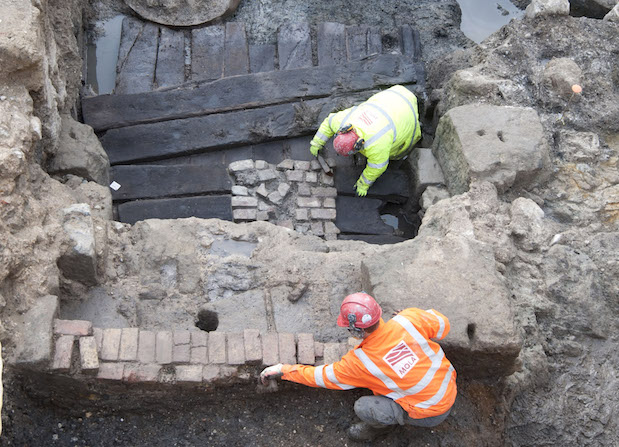Hidden London
Impending development often means there is a chance to step back in time because archaeological investigation may be undertaken as part of the work. This is especially true in London where layers of history have been laid down by successive generations as the city has evolved.
Visiting Barratt London’s Landmark Place site close to the Tower of London, I watched as, layer by layer, archaeologists worked to reveal nearly 2,000 years of history. This includes evidence for a Roman quayside, a 14th-century Custom House administered by Geoffrey Chaucer, and a later Custom House designed by Sir Christopher Wren.
Archaeology has now become firmly established as a factor to be considered in the planning process and, at Landmark Place, the dig has been carefully planned by Barratt London, MOLA, the construction team and the City of London’s planning team. Consequently, the archaeology can be expertly recorded, unlocking the historical significance of the site, whilst allowing for the construction of the development to continue. The trenches, excavated by hand by a team of 45 archaeologists from MOLA, have been specifically located in relation to the foundations for the new building, allowing for the in situ preservation of significant archaeological remains across the site.
With the archaeology reaching a depth of 5 metres in places, the wet ground next to the River Thames provides the perfect conditions for the preservation of archaeological remains and artefacts made of wood and other organic materials, as well as metals. Some of the highlights include:
- Timber revetments surviving to a height of 2 metres dating from the Roman, medieval and early modern periods.
- Rare Roman timber stamps that relate to the supply of timber across the Roman Empire.
- A monumental Roman wall that protected Londinium, blocking it off from the port.
- Chalk foundations of the 13th century Wool Quay, the first building on the site to control export duty.
- Evidence for the 14th century Custom House, given permission by Richard II to collect taxes, a tradition that continued on the site until 1811. This Custom House burnt down during the Great Fire of London.
- Evidence for the elegant 16th century Christopher Wren Custom House, destroyed by a fire in 1714.
- Artefacts relating to nearly 2000 years of the site’s history, from Roman coins to medieval daggers, weighing devices and cannonballs from the Tower of London.
The artefacts and records from the excavation are now at MOLA’s headquarters, where a team of experts are conserving the items, undertaking detailed research and collating all of the information to reveal the story of this historic site.




